Average Calorie Intake of Japanese People by Year, 2016
Ministry of Health, Labour and Welfare conducts the national nutrition survey every year. According to the survey, the average daily calorie intake of a Japanese person in 2016 was 1,865 kcal. The following data show the changes in daily caloric intake of a Japanese person by year.
Figure : Average Daily Calorie Intake of a Japanese Person by Year (unit : kcal)
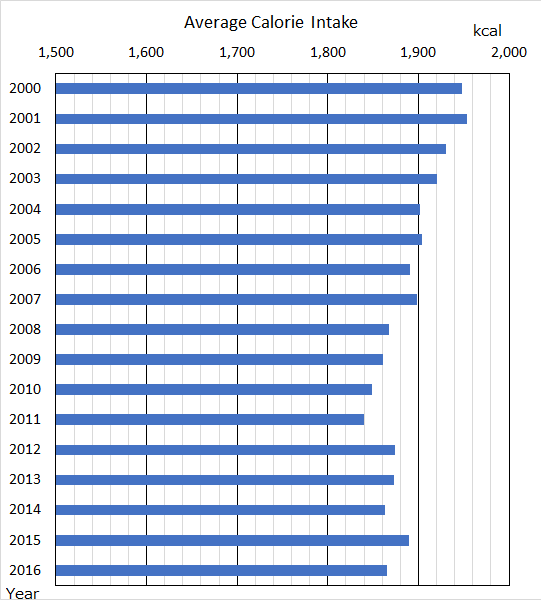
| Year | kcal |
| 1975 | 2,188 |
| 1980 | 2,084 |
| 1985 | 2,088 |
| 1990 | 2,026 |
| 1995 | 2,042 |
| 2000 | 1,948 |
| 2001 | 1,954 |
| 2002 | 1,930 |
| 2003 | 1,920 |
| 2004 | 1,902 |
| 2005 | 1,904 |
| 2006 | 1,891 |
| 2007 | 1,898 |
| 2008 | 1,867 |
| 2009 | 1,861 |
| 2010 | 1,849 |
| 2011 | 1,840 |
| 2012 | 1,874 |
| 2013 | 1,873 |
| 2014 | 1,863 |
| 2015 | 1,889 |
| 2016 | 1,865 |
Source is Ministry of Health, Labour and Welfare. 平成28年国民健康・栄養調査
www.e-stat.go.jp/stat-search/files?page=1&layout=datalist&toukei=00450171&tstat=000001041744&cycle=7&tclass1=000001111535&cycle_facet=cycle&second2=1
www.e-stat.go.jp/stat-search/file-download?statInfId=000031666343&fileKind=0
Related Topics
Top 10 Causes of Death in Japan, 2017
Ministry of Health, Labour and Welfare reported the number of demographic data in 2017. According to it, top 10 causes of death in 2017 are the below.
| Rank | Cause | Cause | Cause | Number of deaths |
| 1 | 悪性新生物 | Malignant neoplasm | Cancer | 373,334 |
| 2 | 心疾患 | Cardiac disease | Heart disease | 204,837 |
| 3 | 脳血管疾患 | Cerebrovascular disease | Brain vessel damage | 109,880 |
| 4 | 老衰 | Senility | Die of old age | 101,396 |
| 5 | 肺炎 | Pneumonia | Lung disease | 96,841 |
| 6 | 不慮の事故 | Freak accident | Accident | 40,329 |
| 7 | 誤嚥性肺炎 | Aspiration pneumonitis | Aspiration | 35,788 |
| 8 | 腎不全 | Renal failure | Kidney disease | 25,134 |
| 9 | 自殺 | Suicide | Suicide | 20,465 |
| 10 | 血管性等の認知症 | Vascular dementia | Dementia (vessel type) | 19,546 |
| Others | 312,847 |

Source is Ministry of Health, Labour and Welfare. 人口動態調査
www.mhlw.go.jp/toukei/saikin/hw/jinkou/kakutei17/index.html
www.mhlw.go.jp/toukei/saikin/hw/jinkou/kakutei17/xls/hyo.xls
Related Topics
Ranking of Railway Companies in Japan by Route Length (excluding JRs)
Here is the ranking of railway companies in Japan by operational network length.
There are 2 groups of railway companies in Japan; JR group and the rest of companies (called as Shitetu). JR companies used to be one company; Japan National Railway (JNR). JNR was denationalized and divided into 7 companies in 1980s. In this post, I mention about the only non-JR companies, because statistics method is different between the 2 groups.
The following shows the ranking of railway companies by route length in Japan. It does not include JRs. The source is 日本民営鉄道協会 THE ASSOCIATION OF JAPANESE PRIVATE RAILWAYS. www.mintetsu.or.jp/activity/databook/
Table: Ranking of railway companies in Japan by operational network length, 2017
| Company |
Operating revenue (million yen) |
Length (Working kilometer) | Stations | Cars | Passengers (x 1000) |
| Kintetsu | 156,574 | 501.1 | 286 | 1,905 | 575,797 |
| Tobu | 160,667 | 463.3 | 203 | 1,898 | 908,881 |
| Meitetsu | 91,003 | 444.2 | 275 | 1,072 | 378,876 |
| Tokyo Metro | 369,109 | 195.1 | 179 | 2,766 | 2,642,116 |
| Seibu | 101,711 | 176.6 | 92 | 1,266 | 648,420 |
| Nankai | 59,878 | 154.8 | 100 | 688 | 236,153 |
| Keisei | 64,401 | 152.3 | 69 | 582 | 280,283 |
| Hankyu | 101,294 | 143.6 | 90 | 1,299 | 647,369 |
| Odakyu | 119,880 | 120.5 | 70 | 1,074 | 749,421 |
| Nishitetsu | 21,446 | 106.1 | 72 | 330 | 101,909 |
| Tokyu | 152,819 | 104.9 | 97 | 1,203 | 1,163,023 |
| Keihan | 54,963 | 91.1 | 89 | 706 | 291,087 |
| Keikyu | 83,571 | 87.0 | 73 | 790 | 467,849 |
| Keio | 84,558 | 84.7 | 69 | 843 | 660,327 |
| Hanshin | 35,321 | 48.9 | 51 | 358 | 236,766 |
| Sotetsu | 33,045 | 35.9 | 25 | 398 | 230,077 |
No.1
Kintetsu (official name: Kinki Nippon Tetsudo)
Kintestu is the largest "Shitetsu (non-JR railway)" in Japan. It covers mainly Osaka, Nara, and Mie.

No.2
Tobu (Tobu Tetsudo)
Tobu has 2 main routes; Isesaki line and Tojo line.
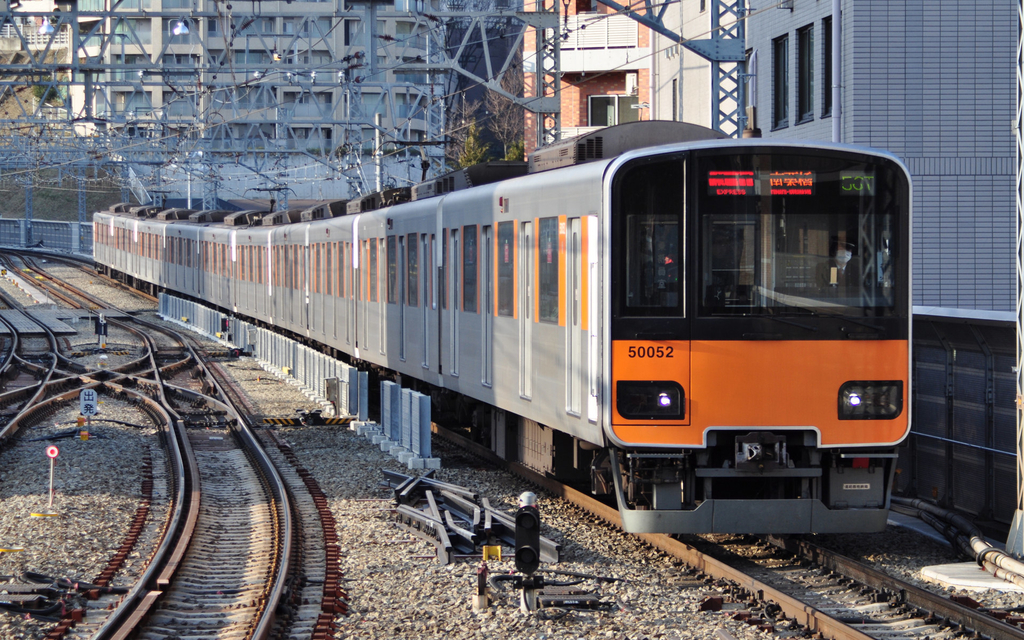
No.3
Meitetsu (Nagoya Tetsudo)
Meitetsu is based on Nagoya. Unfortunately, people in Nagoya prefer to use cars than trains. So recently Meitetsu abolished some unprofitable lines.
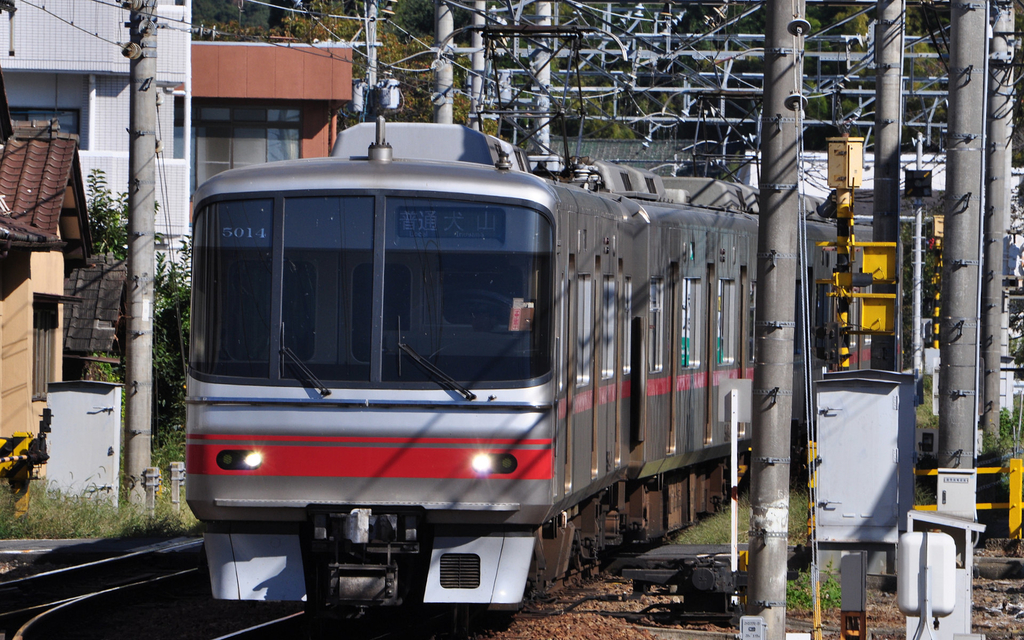
No.4
Tokyo Metro
Tokyo Metro is a subway. It used to be banned that Shitetsu operates in the central Tokyo (= inside Yamanote line circle). Only the national railway and trams were allowed to run their business in the heart of Tokyo. Tokyo Metro and Toei Chikatstu subway (run by Tokyo Metropolitan Government) took over the tram's business area.

No.5
Seibu (Seibu Tetsudo)
Seibu has 2 main routes; Ikebukuro line and Shinjuku line.

No.6
Nankai (Nankai Denki Tetsudo)
Nankai also has 2 main lines; Nankai line and Koya line.

No.7
Keisei (Keisei Dentetsu)
Keisei runs between Tokyo (Ueno) and Narita.
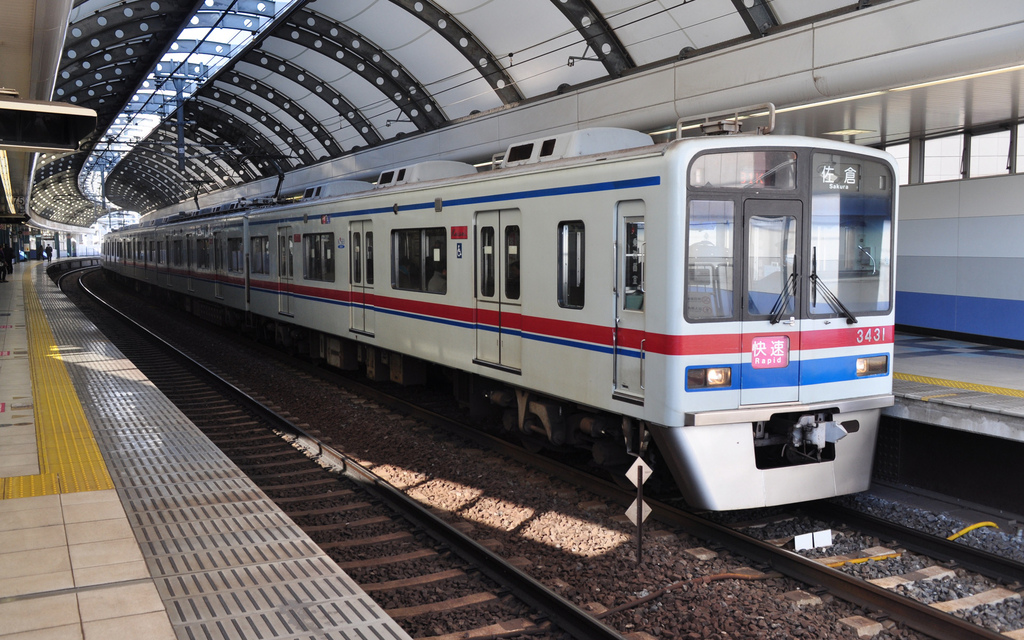
No.8
Hankyu (Hankyu Dentetsu)
Hankyu has 3 main routes; Kyoto line, Kobe line, and Takaraduka line.

No.9
Odakyu (Odakyu Dentetsu)
Odakyu has 2 main lines; Odawara line and Enoshima line.

No.10
Nishitetsu (Nishi Nippon Tetsudo)
Nishitetsu is based on Kyushu island.

No.11
Tokyu (Tokyo Kyuko Dentetsu)
Tokyu's 2 main bones are Toyoko line and Den'entoshi line.

No.12
Keihan (Keihan Denki Tetsudo)
Keihan runs betweem Kyoto and Osaka.
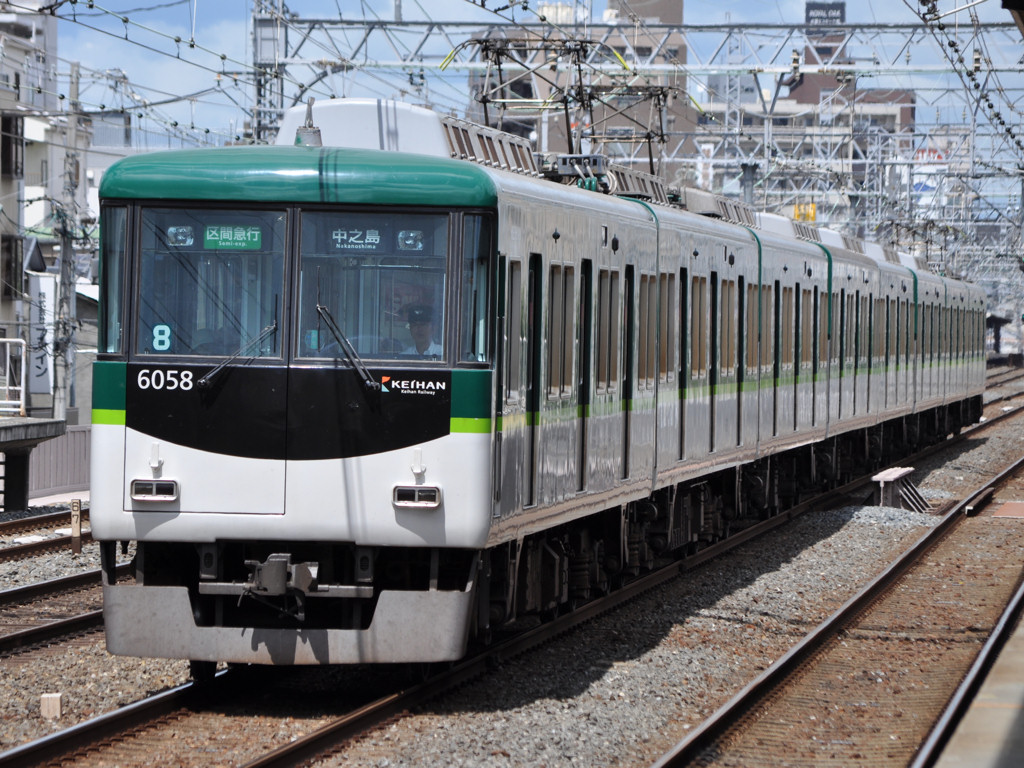
No.13
Keikyu (Keihin Kyuko Dentetsu)
Keikyu has a unique policy. Their front car must have moters. Other companies allow that front cars do not have a moter. Moters make the cars heavy. If a front car has moters, the risk of derailment is reduced when the car hits something.

No.14
Keio (Keio Dentetsu)
Keio runs between Tokyo (Shinjuku) and Hachioji.

No.15
Hanshin (Hanshin Denki Tetsudo)
Hanshin runs between Osaka and Kobe.

No.16
Sotesu (Sagami Tetsudo)
Sotetsu runs between Yokohama and Ebina.
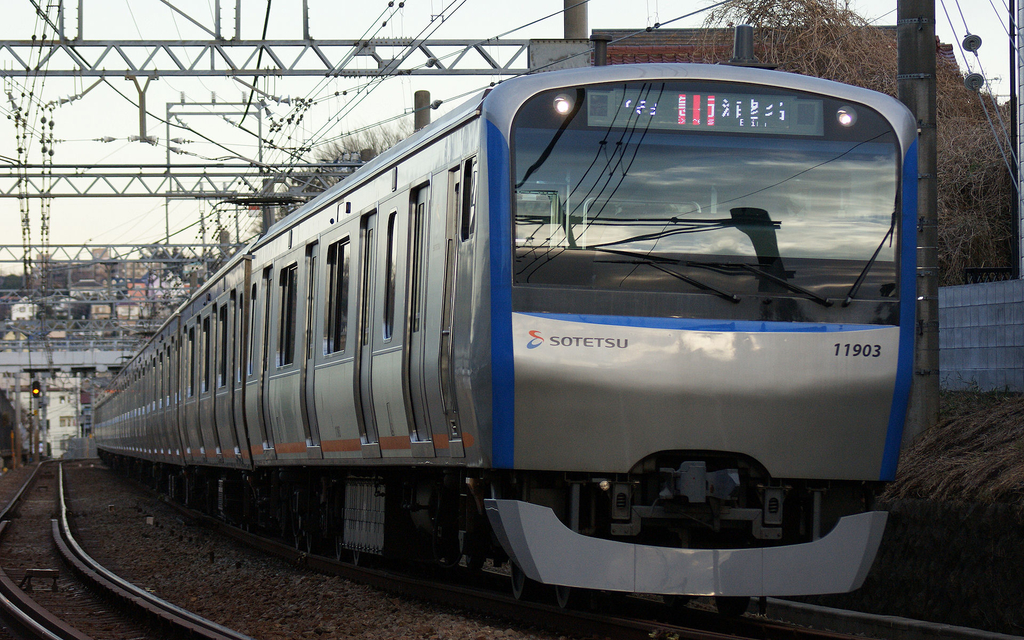
All photos are provided by Railstation.net.
Related Topics